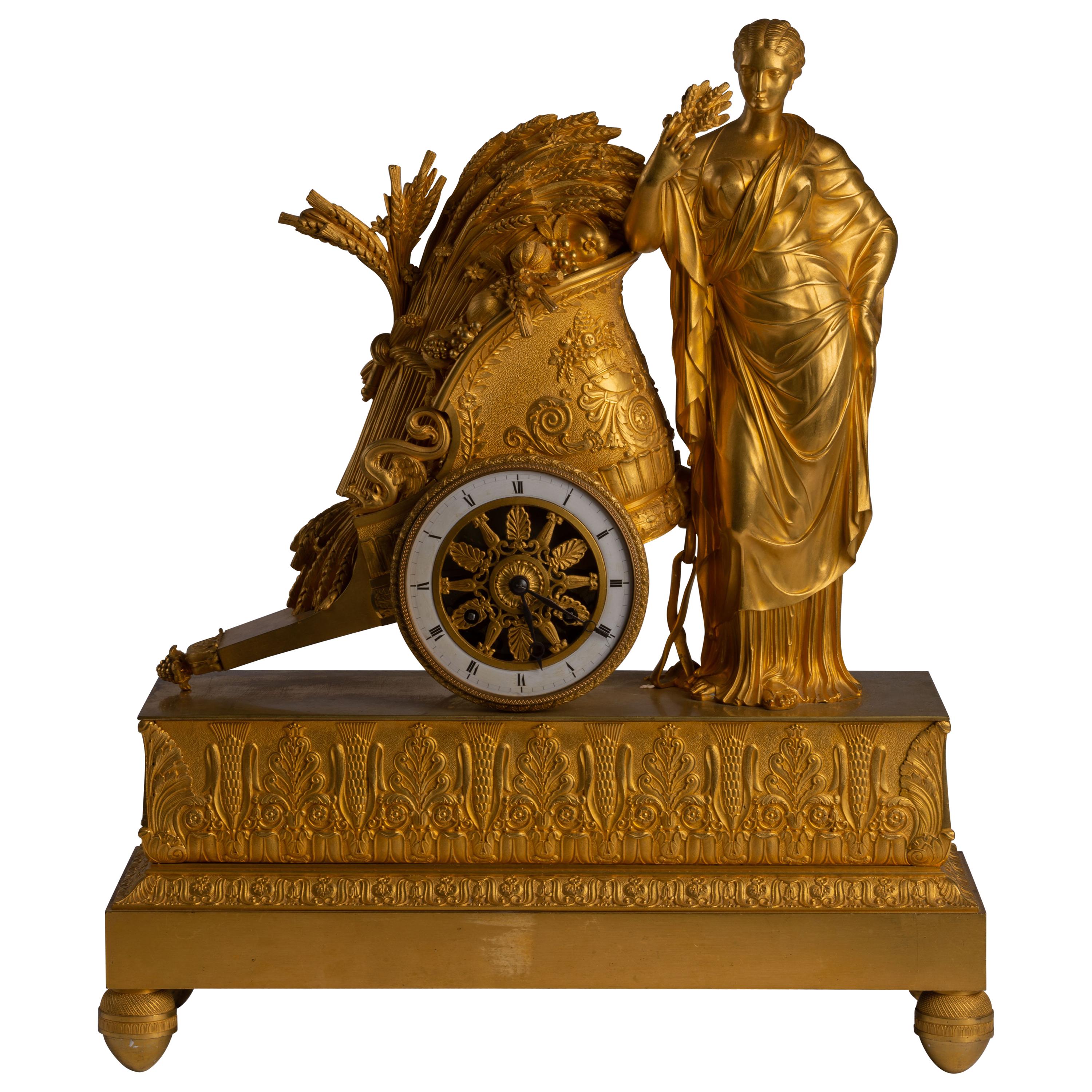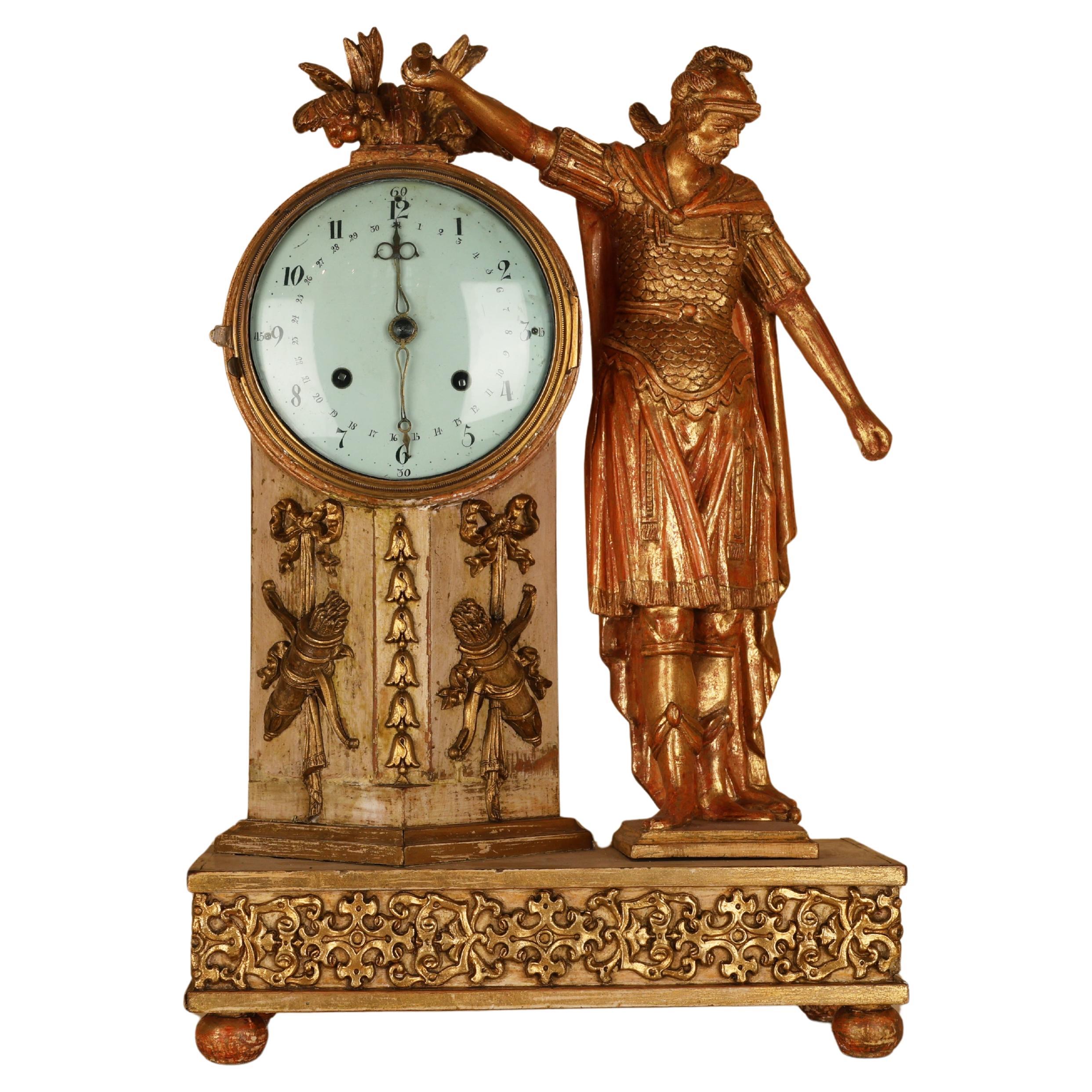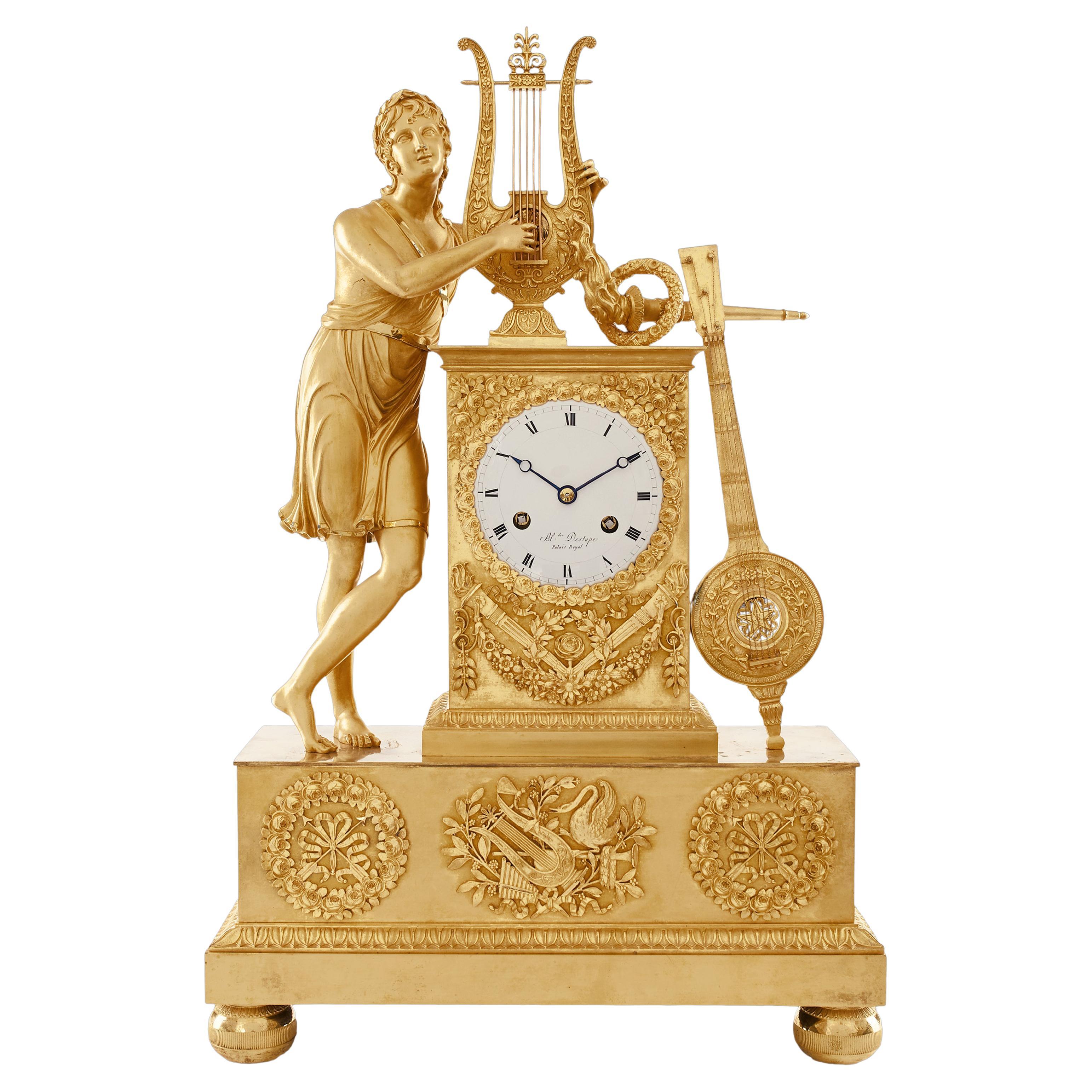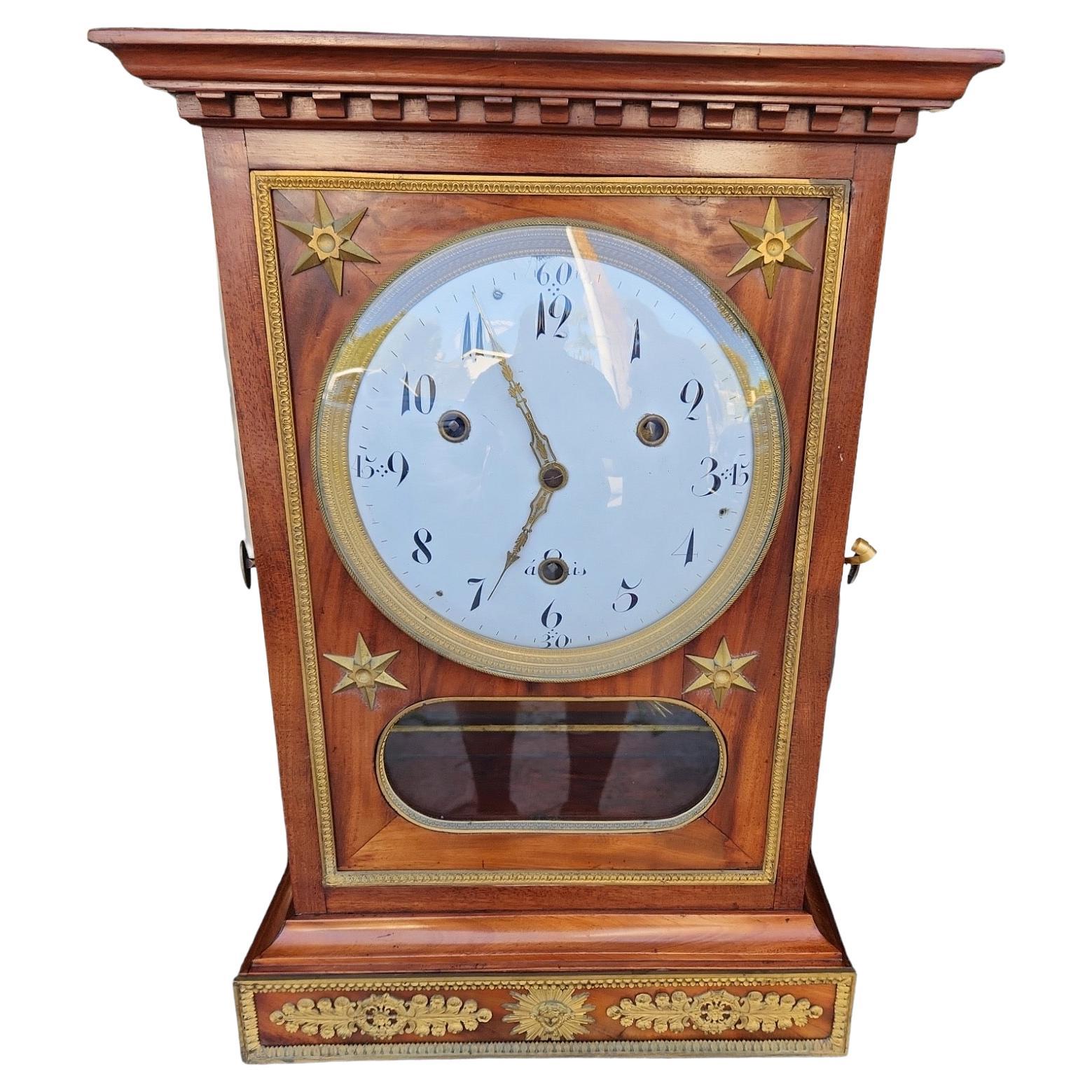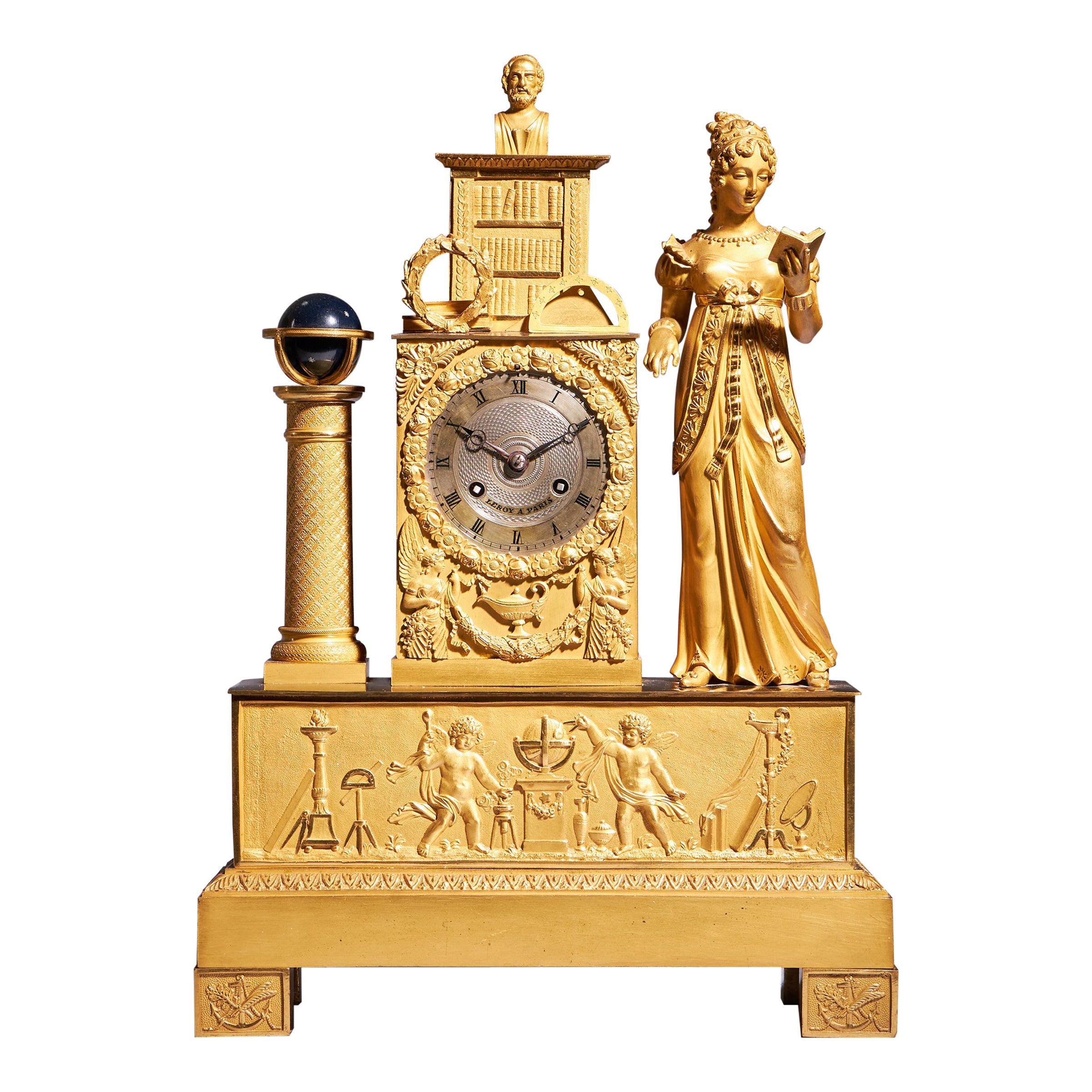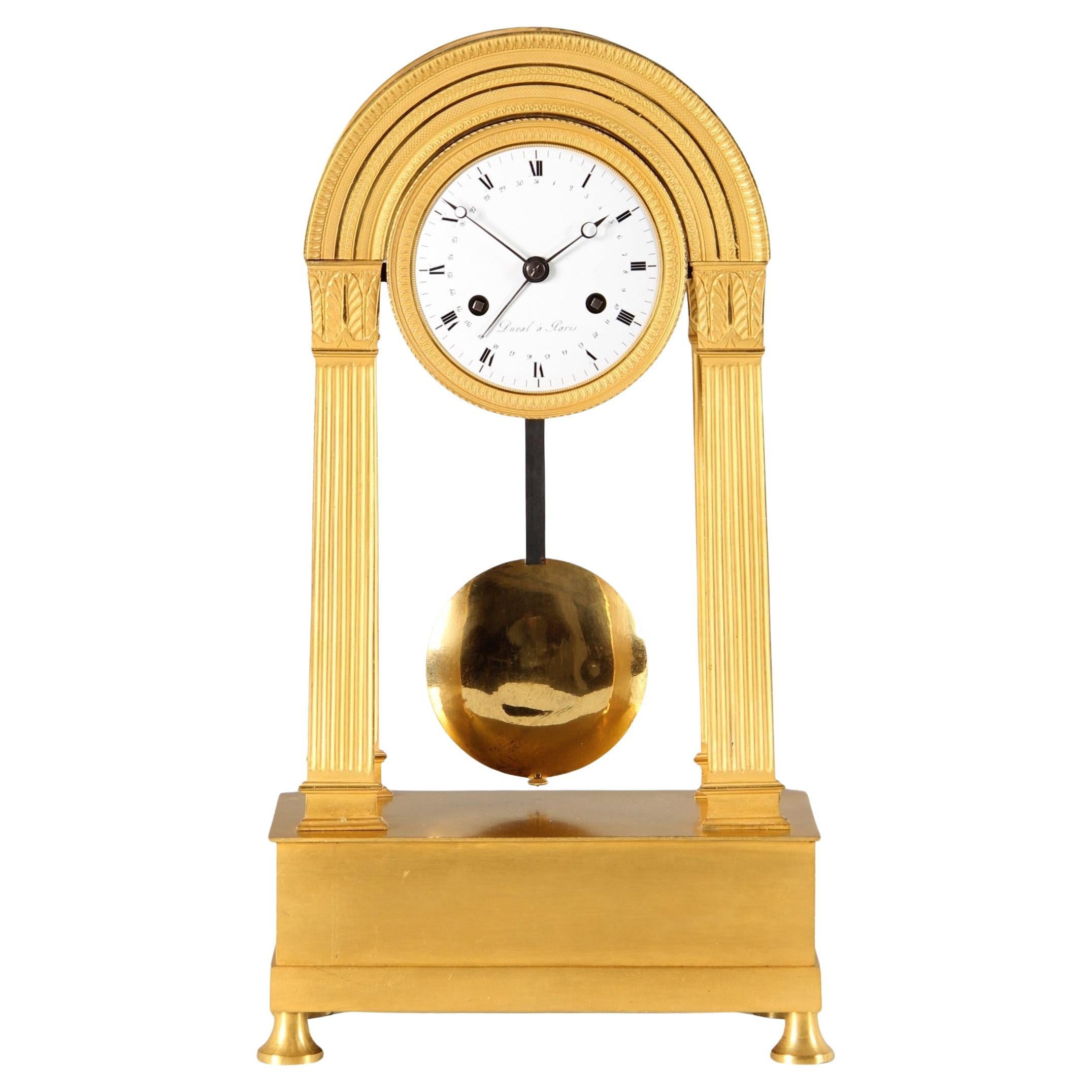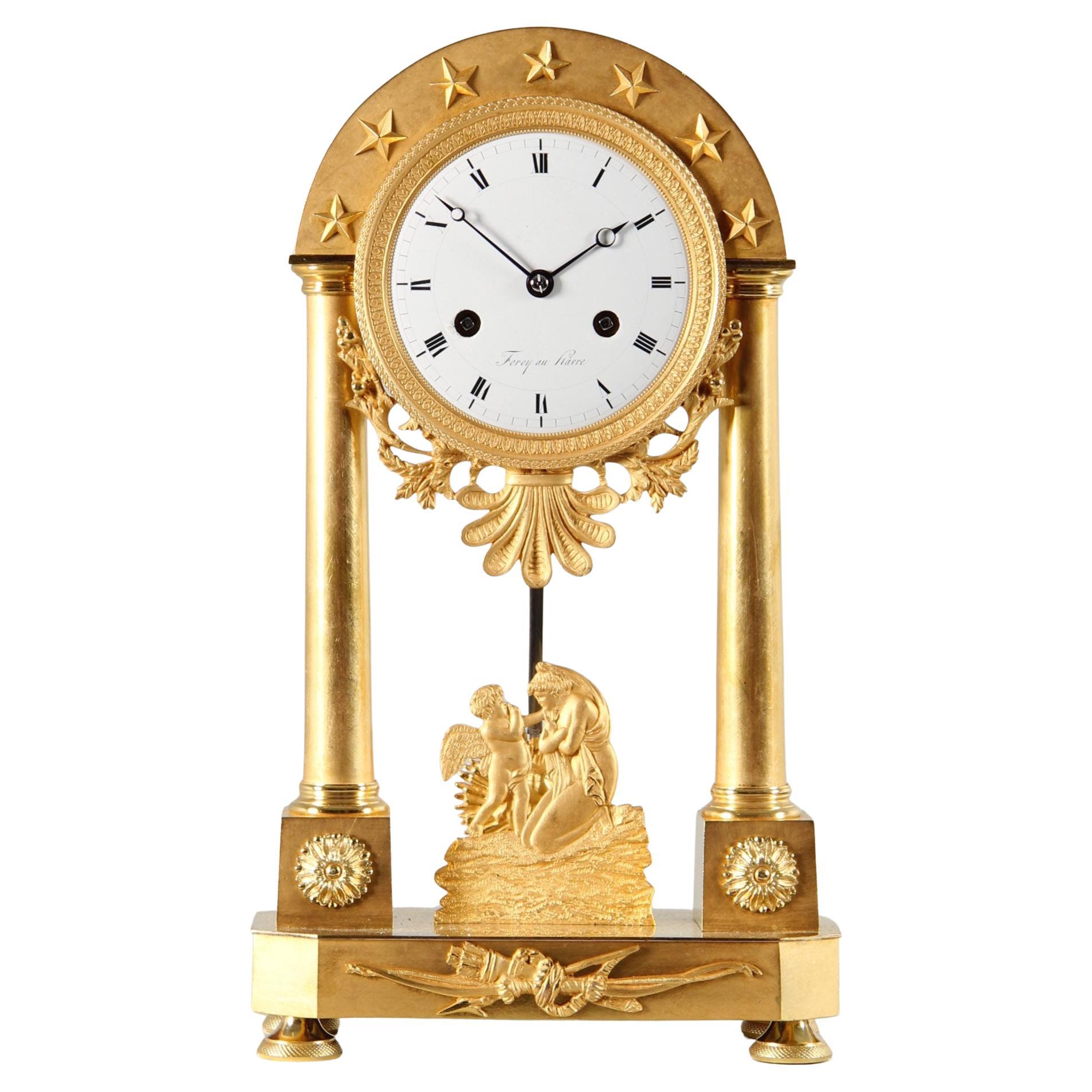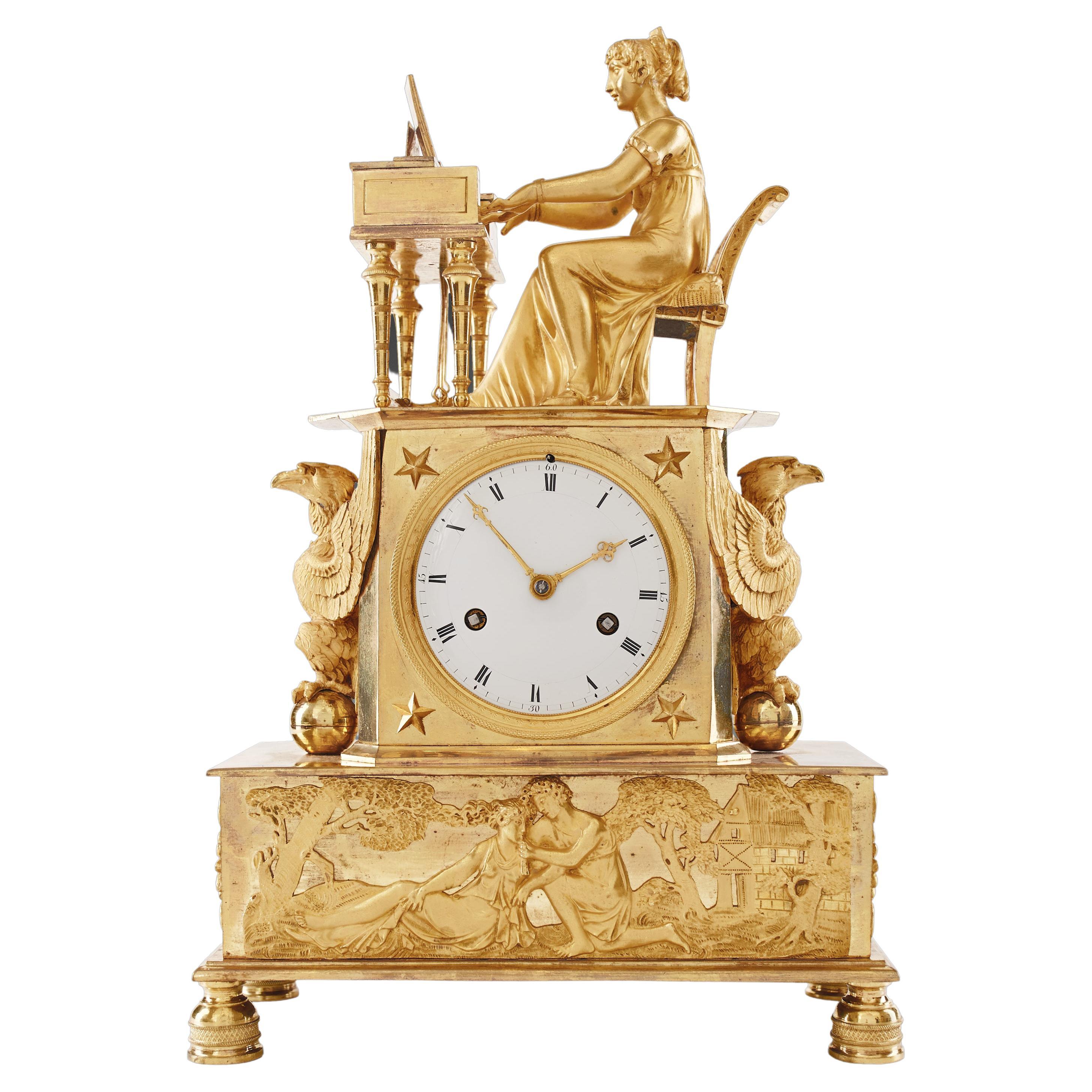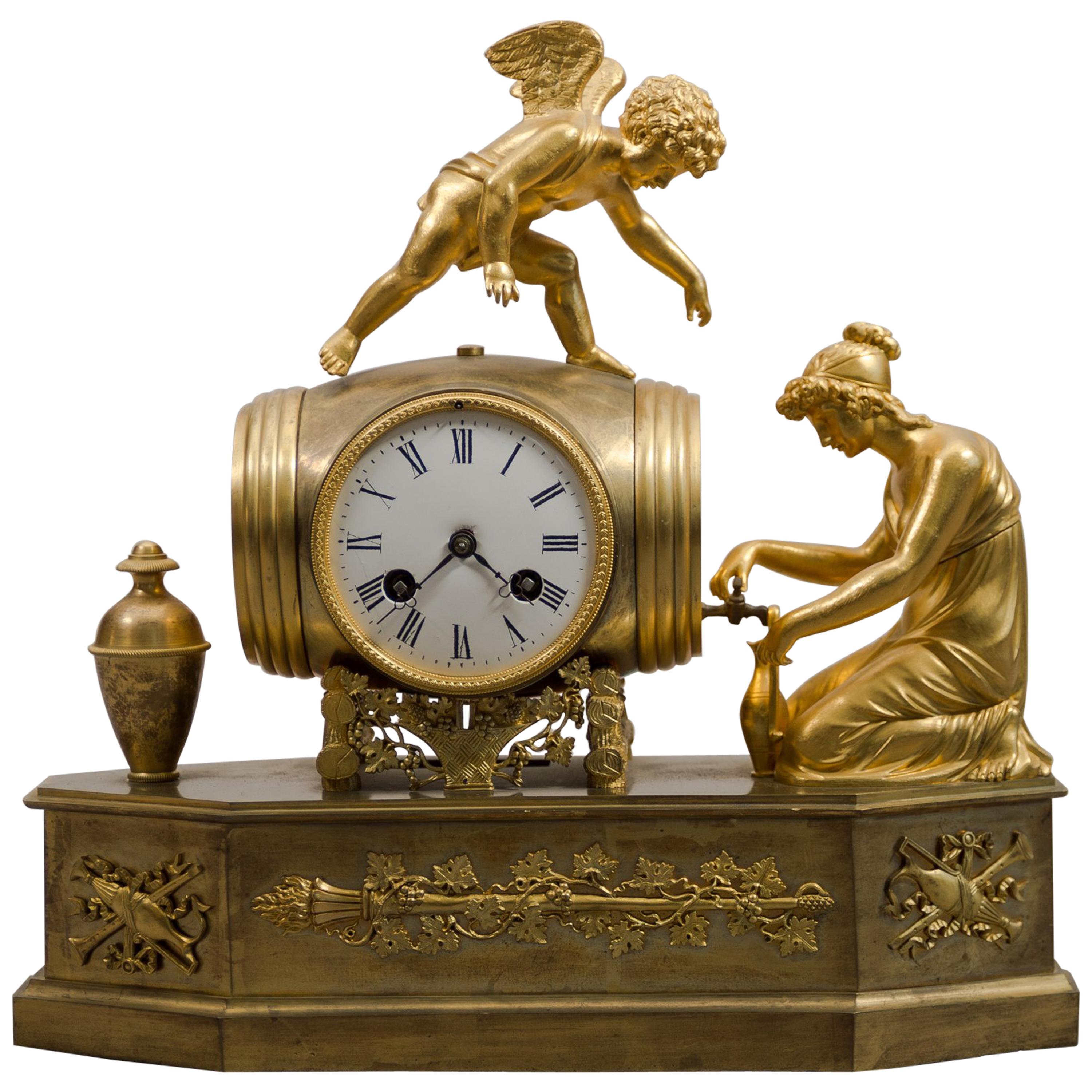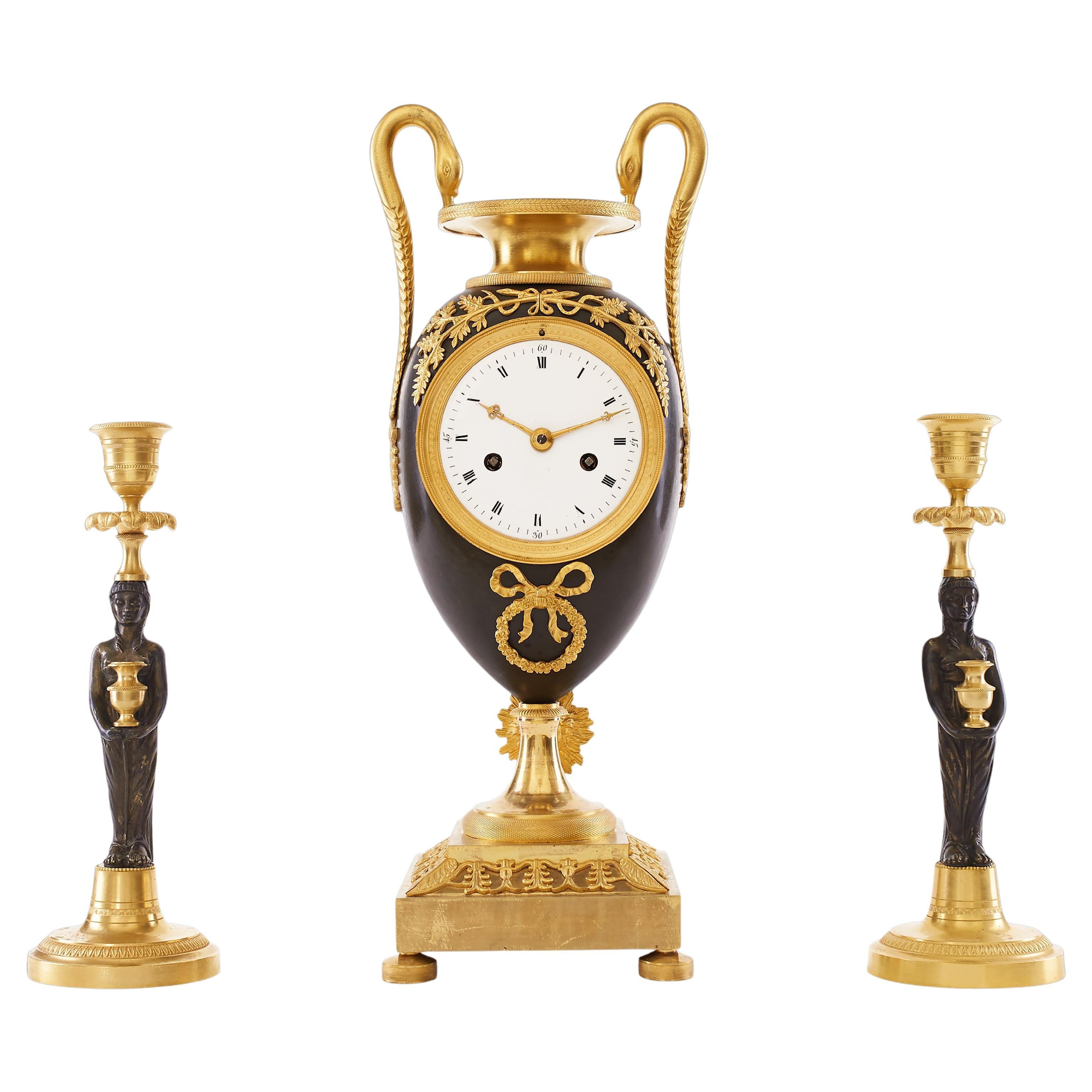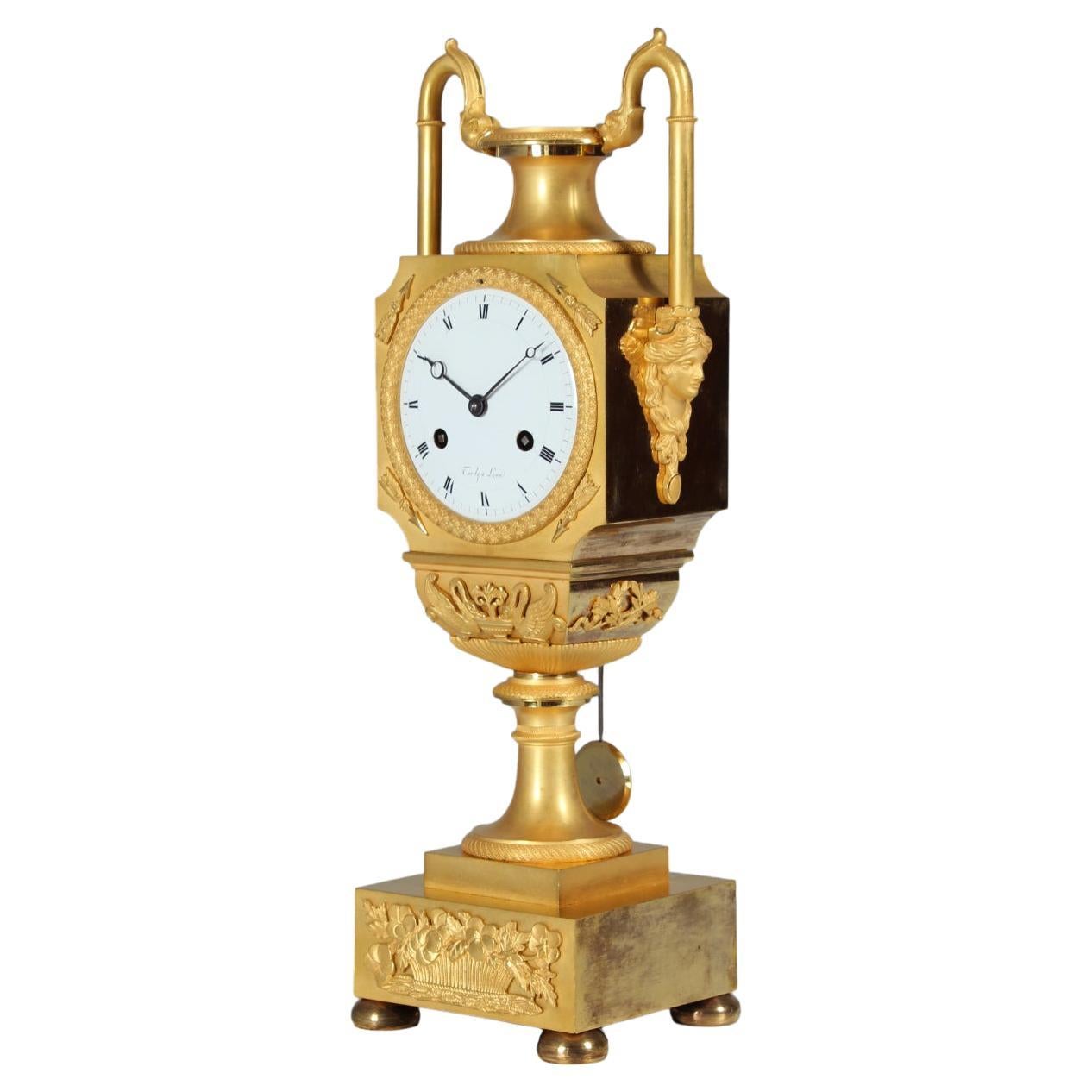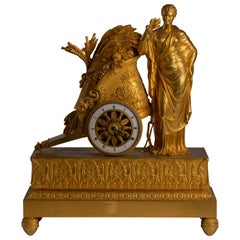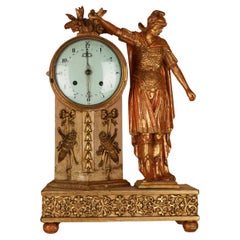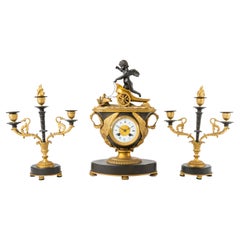
19th Century Patinated & Ormolu Empire Striking Mantel Clock Set Pendule Au Vase
View Similar Items
1 of 9
19th Century Patinated & Ormolu Empire Striking Mantel Clock Set Pendule Au Vase
$6,750List Priceper set
About the Item
- Dimensions:Height: 15.5 in (39.37 cm)Width: 9.75 in (24.77 cm)Depth: 4.5 in (11.43 cm)
- Sold As:Set of 3
- Style:Empire (Of the Period)
- Materials and Techniques:
- Place of Origin:
- Period:
- Date of Manufacture:circa 1810
- Condition:Wear consistent with age and use.
- Seller Location:Pasadena, CA
- Reference Number:1stDibs: LU7847231906322
Authenticity Guarantee
In the unlikely event there’s an issue with an item’s authenticity, contact us within 1 year for a full refund. DetailsMoney-Back Guarantee
If your item is not as described, is damaged in transit, or does not arrive, contact us within 7 days for a full refund. Details24-Hour Cancellation
You have a 24-hour grace period in which to reconsider your purchase, with no questions asked.Vetted Professional Sellers
Our world-class sellers must adhere to strict standards for service and quality, maintaining the integrity of our listings.Price-Match Guarantee
If you find that a seller listed the same item for a lower price elsewhere, we’ll match it.Trusted Global Delivery
Our best-in-class carrier network provides specialized shipping options worldwide, including custom delivery.You May Also Like
Empire Ormolu Mantel Clock 'Pendule au char'
Located in Kittery Point, ME
The rectangular base decorated with a wheat and foliate frieze and raised on four ball feet, the goddess of agriculture Ceres standing while leaning against a Roman chariot with harv...
Category
Antique Early 19th Century French Empire Mantel Clocks
Materials
Bronze
$7,600 Sale Price
20% Off
19th Century Empire Mantel Clock
Located in Ljungby, SE
An Empire mantel clock in gilded wood, made in Austria or Germany 1820-1830. It features a warrior dressed in classical armor with his arm resting atop the clock. The clock pillar is...
Category
Antique 19th Century European Empire Mantel Clocks
Materials
Wood
Mantel Clock 19th Century Empire
Located in Warsaw, PL
Figural mantel clock signed “Al. dre Destape Palais Royal”
The bronze figural mantel clock depicting one of the mythical heroes - Orpheus originates from the Empire period. The cloc...
Category
Antique Early 19th Century French Empire Mantel Clocks
Materials
Bronze
19th Century Empire Mantel Clock
Located in Los Angeles, CA
Excellent condition with finely chased dore bronze mounts. Has key and pendulum.
Category
Antique Early 19th Century French Empire Mantel Clocks
Materials
Bronze
Fine 19th century French ormolu mantel clock (pendule) by Leroy a Paris, c. 1825
By LeRoy
Located in Oxfordshire, United Kingdom
A most beautiful French ornolu mantel clock by Leroy à Paris
A lovely French late Empire/early Charles X mantel clock with an ormolu case, c. 1825. The ormolu brass case depicts a celebration of Science and Learning. It is dominated by a rectangular superstructure containing the movement, flanked by an engine-turned column with a celestial globe on top on the left and an elegant lady reading a book on the right. The superstructure is surmounted by a bookcase and a bust of Socrates...
Category
Antique Early 19th Century French Empire Mantel Clocks
Materials
Brass, Ormolu
Early 19th Century French Empire Mantel Clock, Portal Pendule, Paris circa 1820
By Duval
Located in Greven, DE
Antique French round arch portal clock
France (Paris)
Bronze, enamel
Empire circa 1820
Dimensions: H x W x D: 47 x 26 x 12 cm
Description:
Very beautiful, strictly architecturally...
Category
Antique Early 19th Century French Empire Mantel Clocks
Materials
Bronze, Enamel
